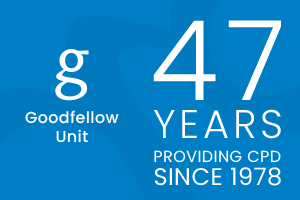
This MedCase was first published in 2020. It was updated by Dr Hazel Fuiava, MBChB, Dip Paeds, FRNZCGP.
Testosterone is used in clinical practice as a treatment for female sexual dysfunction despite a lack of clearly established indication or adequate supporting data.1
This MedCase describes treatments for female sexual dysfunction, reviewing recent evidence for the safety and efficacy of testosterone, with guidance on prescribing in general practice.
Mrs R is a 58 year old postmenopausal woman who presents with concerns about her libido, which has reduced gradually over the past ten years. She has always had a good relationship with her husband but lately her lack of interest in intimacy has begun to bother them both.
Mrs R went through menopause at age 53 and is stable on menopause hormone therapy (MHT). During the perimenopause, she started cyclical estrogen and progesterone to improve her symptoms of hot flushes, poor sleep and low mood. Once her bleeding stopped, she switched to continuous estradiol 1mg and norethisterone acetate 500 microgram (Kliovance), which she tolerates well and gives good symptom control.
Her sleep is mainly good, and she has no symptoms of anxiety or depression. However, she tells you she worries about the effect of the lack of sexual intimacy on her relationship.
She wonders if menopause has made it worse.
How do you approach this consultation?
Low libido: When is it a problem?
Low libido, or a reduced desire for sex, can be seen as normal and should be considered problematic only when it causes distress. Various terms are used to describe low libido, including hypoactive sexual desire disorder (HSDD).
Patients may find it helpful to understand more about female sexual desire and arousal and there are some good resources available from:
- The Jean Hailes women’s health website.
- The book “Where Did My Libido Go?” by Dr Rosie King.
- The Australasian Menopause Society (AMS) information sheet on Sexual Difficulties in the Menopause.
Libido may be a sensitive topic and patients can be reluctant to raise it. Be proactive and ask: “Are you concerned about difficulties with sexual activity?”
What role do hormones play?
The physiology of sexual desire and interest is complex and individual; hormones are only one component. Factors such as relationship issues, health comorbidities (e.g. diabetes), previous sexual or emotional abuse, and body image issues can impact on a woman’s desire for sex. It is important to elicit non-hormonal factors contributing to low libido, as these are targets for therapy.
Estrogen levels are directly related to libido, as evidenced by studies showing a correlation between reduced estrogen and reduced sexual function.2 This is particularly relevant during the menopausal transition, when declining estrogen causes vaginal dryness and can make intercourse uncomfortable. Other menopause-related sleep and mood issues may also contribute to reduced libido and overall energy.
Testosterone is less directly associated with libido. Overall testosterone levels decline with age starting from the mid-20s, although ovaries continue to produce androgens during menopause. Available testosterone, as measured by the free androgen index, remains stable throughout menopause.
Testosterone is more likely to contribute to low libido in women who have had bilateral oophorectomy, who can experience an almost 50% reduction in free testosterone, which likely contributes to reduced libido.2
It is important to note also that the assay used to measure testosterone was designed for men and may not be accurate for women.
What therapies are available?
Therapies for reduced libido target the multifactorial causes and must be individualised to best target the key contributing factors for each patient. In short, targets for therapy are:
- Treatment of genitourinary symptoms of menopause (GSM) to minimise dyspareunia (see Vulvovaginal problems after menopause by the Australasian Menopause Society)
- Estrogen replacement with MHT (ensuring that the risk-benefit ratio stacks up; see our MedCase on MHT)
- Treatment of anxiety or depression if present.
- Relationship counselling.
- Cognitive-behavioural therapy or other psychological intervention from an appropriately qualified therapist (see Sex Therapy NZ website).
You discuss libido further with Mrs R.
She cannot identify any particular relationship or body image issues affecting her libido.
She and her husband saw a counsellor last year who recommended some behavioural strategies but these have made little difference. Her MHT dose is stable.
Could testosterone be a suitable treatment for Mrs R?
When is testosterone appropriate?
There is currently no testosterone treatment specifically for women that has been approved by Medsafe, though the off-label use of male testosterone formulations is not uncommon in clinical practice.
It should be a considered 3rd or 4th line therapy option, after other relevant contributing factors have been addressed.
Does it work?
Until recently there were little data on the efficacy of testosterone in women, but a 2019 meta-analysis has provided a useful summary of the available evidence allowing better guidance for clinicians.2 The authors evaluated 36 randomised controlled trials in over 8,000 patients using both oral and transdermal formulations. Overall, the findings suggest that testosterone is effective for the treatment of low libido in post-menopausal women.
Is it safe?
No serious adverse effects were reported in the analysis.2 However, studies were of short duration and no long-term safety data is available. There was a formulation-dependent increase in cardiovascular risk; oral testosterone therapy was associated with negative effects on cholesterol and is not recommended. In contrast, non-oral (transdermal) testosterone did not affect lipids over a 12-week period and is preferred for use in women.
Common concerns associated with testosterone use relate to the hirsutism, acne and weight gain. Though these were reported in the studies, they did not lead to treatment discontinuation. Patients should be encouraged to balance the risks and benefits of treatment when deciding whether to continue.
| Key findings from the testosterone meta-analysis2 |
| In post-menopausal women: • Testosterone therapy, used in doses that approximate physiological concentrations for at least 12 weeks, significantly improved sexual function and reduced distress, compared with women taking placebo or other hormone therapy. • Immediate adverse effects were weight gain (mean 0.5kg), acne and hirsutism. Note that these effects did NOT lead to discontinuation of treatment. • Worsening cholesterol markers were observed with oral but not transdermal formulations. • There were no serious adverse events (though women at high cardiometabolic risk were excluded from the study) but only short-term data is available. • There was no convincing evidence of efficacy of testosterone for treatment of other indications such as depression, bone loss, cognitive function or general wellbeing.
In pre-menopausal women: Testosterone is recommended for treatment of hypoactive sexual desire disorder (HSDD) in postmenopausal women on the basis of these data, as per a global consensus statement1 endorsed by the Royal Australian and New Zealand College of Obstetricians and Gynaecologists (see page 15 of their Managing Menopausal Symptoms clinical guideline). |
You suggest that testosterone may be a good option for Mrs R.
She asks for some more information, so you bring up the Australasian Menopause Society website showing a summary of their position statement and go through the key points. You note that Mrs R does not have hyperlipidaemia and her cardiovascular risk is low. Mrs R is keen to try it.
How do you prescribe testosterone? Do you need blood tests before starting treatment?
Initiating treatment
A diagnosis of low libido or HSDD relies on clinical rather than laboratory findings. However, testing total testosterone pre-treatment is useful to exclude high androgen states where testosterone therapy should be avoided.
During therapy, it is important to monitor total testosterone to ensure levels remain within the normal range for premenopausal women. The total testosterone blood test is funded; check with your local laboratory for the normal range as it may vary by assay type.
Note that patients may be aware of a test for active testosterone called the Free Androgen Index (FAI) [also called sex hormone binding globulin or SHBG]. Testing active testosterone is more accurate that measuring total testosterone, since testosterone is highly protein-bound. However, this test is not funded in New Zealand and it is not necessary to guide treatment.
Other useful pre-investigation investigations are lipids, given the risk of hyperlipidaemia with oral preparations, and a pregnancy test; testosterone can have a virilising effect on the foetus.3 Confirm that the woman is not pregnant before starting treatment.
Practice points
Best practice is for GPs to prescribe testosterone under the guidance of a women's health specialist, so consider submitting a ‘Request for Advice’ to your local DHB Gynaecology team to explain your rationale for prescribing.
What to prescribe
A transdermal formulation is recommended to avoid adverse lipid changes. The most common formulation prescribed by women’s health specialists is AndroFeme cream, which is not registered for use in New Zealand but is approved for use in women in Western Australia. This is not a compounded testosterone cream (which has no safety or regulation data), and information on prescribing it can be found here. A suggested starting dose is 0.5cm applied to the skin daily. Monitor for local skin reactions and adjust the dose based on testosterone levels, which can be measured 3-monthly.
Of note, the only registered topical testosterone in New Zealand is a long-acting testosterone patch3 (brand name: Androderm®), which is indicated for male use; it is used off-label in females. This patch is used rarely in practice.
You explain to Mrs R that you will contact secondary care and discuss prescribing, then if appropriate you can arrange a prescription for her.
You send a ‘Request for Advice’ to your DHB Gynaecology team, and receive a reply agreeing with your plan to start Mrs R on a testosterone cream.
You phone Mrs R to advise that you have written the prescription and ask her to monitor her symptoms as well as any side effects, and to see you again in 3 months after having a blood test to check total testosterone.
After 3 months, the total testosterone is 1.7nmol/L. Mrs R tells you she has had more energy and is enjoying sex with her libido improved. She has had some acne but no other effects of excess androgen.
You agree to continue the cream at the current dose and with regular 3-monthly reviews of bloods and symptoms.
This MedCase was created in 2020 by Dr Vicki Mount, General Practitioner, MBChB, DipPaeds, with expert review by Dr Stella Milsom, Reproductive Endocrinologist, MBChB, Dip Obs, FRACP.
Recognition of Learning Activities
Don't forget to log your time with The Royal New Zealand College of General Practitioners portal for recognition of learning activities.


